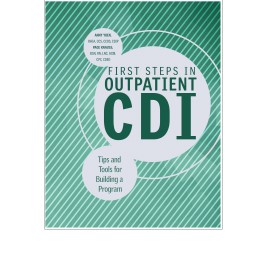Book excerpt: Outpatient documentation challenges

Tips and Tools for Building a Program
By Anny Yuen, RHIA, CCS, CCDS, CDIP, and Page Knauss, BSN, RN, LNC, ACM, CPC, CDEO
In many instances, the documentation for a particular service needs to be provided before the encounter. This is especially true for diagnostic tests such as MRI scans. For example, a patient who made an appointment with their primary care physician for left arm pain may be sent to a radiology facility for an X-ray. In this case, a physician order for care is necessary to provide services. Orders verify the patient’s chief complaint, diagnosis, and necessary test or service. It must be legible and include the provider’s signature and date. A physician’s order can be thought of as instructions from one provider to another, so that specific diagnostic tests or treatments can be rendered to the patient.
A patient may also be admitted for observation from the emergency department. Observation is considered an outpatient service, and it requires a physician order for admission to an observation bed. Documentation should include the date and time of the patient’s admission and discharge, as well as the patient’s history and physical (H&P), progress notes, vital signs, medication record, and laboratory and radiology test results, as appropriate. Documentation should support treatment of the patient’s condition and disposition status at the time of discharge.
Many third-party payers have reimbursement guidelines for observation services, so providers must be very detailed in their documentation to support medical necessity for the length of time spent in observation.
Limited documentation
Due to the quick timing of outpatient visits and the shorter lengths of stay, the amount of documentation that appears in the patient’s medical record, especially from physicians, will be very limited. The amount of documentation also depends on the type of services provided. At a minimum, the content includes demographic and financial information, along with any test results performed. An office visit and emergency department record will also contain vital signs, medication lists, nursing documentation, an H&P, provider assessments, and treatment plan. Despite the fact that there might be limited documentation available, CDI specialists still have plenty of opportunities to obtain the highest level of specificity for each documented diagnosis, even though the process for obtaining this specificity will differ greatly.
Editor’s note: This article is an excerpt from the book First Steps in Outpatient CDI: Tips and Tools for Building a Program.
